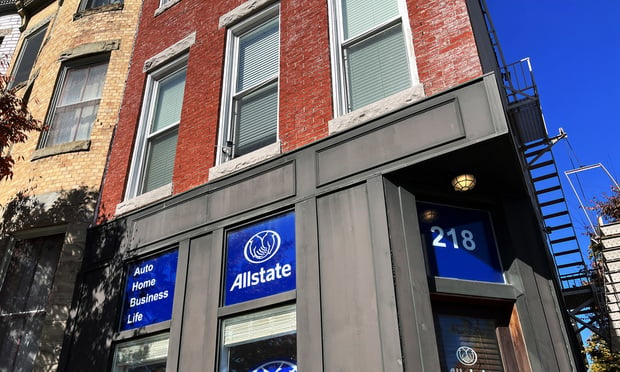What's your worst case scenario?
We all have one that leaps to mind: a flood at a convention center days before a major event, an acid spill at a semi-conductor facility in the middle of a production run, or a fire at a toy factory during the Christmas manufacturing rush. None of these, however, are any more threatening than what faced a major hotel in a year-round resort location.
The problem resulted from a combination of building envelope construction defects and excessive rain. The hotel faced a major mold problem affecting many rooms in multiple buildings in the midst of a complex occupancy schedule.
“There were any number of major concerns and considerations,” said Mitchell Parks, national account manager for Belfor, which responded to the incident. “Safety was obviously at the very top of the list, so the very first question was, 'Could the work be done while the hotel remained open, or would they need to close it?'”
If the property owners were to close the hotel, the work certainly could be completed much more quickly. It could be performed over a period of several months, instead of the elongated timetable that would be necessary to operate around the hotel guests. This is the real world, though, and there were many reasons why keeping the hotel open was critical for the property owners and their insurance company.
Immediately, the hotel would lose all business booked during the time that it would have to have closed. Keep in mind that once the hotel is closed down, it is difficult to predict exactly when it will re-open, further limiting the reservations that can be booked. In a city that hosts many conventions that depend on specific dates and guarantees, this would have a ricochet effect on business continuity, creating far-ranging economic consequences.
The hotel also would have found itself in the position of breaking extensive package-deal contracts with major airlines, extremely valuable deals that take months to negotiate. It would face the very real possibility of losing that business for an extended period of time, if not permanently.
There also was the issue of reputation. “Let's face it,” said Parks, “this is a public relations nightmare for any business, let alone a hotel. Everyone has heard about the mold threat. The stigma associated with it is enough to severely damage business prospects for months and even years following abatement.”
Other, more practical concerns figured into the equation. Major hotels invest significantly in hiring and training staff and housekeeping. If closed for any length of time, this investment surely would be lost and the process would need to begin all over again.
Even so, the potential safety problems trumped any of these considerations. It all came down to one simple question: could the project be completed while keeping the hotel open and without jeopardizing the safety of any guests or employees?
Moving Forward
Parks and his associates put together a detailed, workable plan, one that met all concerns and allowed for temporary interruptions to accommodate occupancy issues. The hotel owners and the restoration team negotiated until everyone was satisfied. The plan involved completely sealing off affected areas and contracting for constant monitoring by independent safety experts.
“This particular plan was distinguished by a number of unusual features,” said Parks. “Due to occupancy, we couldn't do an overall scope of work. We were going to have to work room by room, doing scopes as we went along. This frequently meant that a scope was done literally five minutes before the work began.”
The plan's effectiveness depended on coordinating a broad range of technical aspects that included mold abatement, as well as construction defects that varied from room to room. At all times, it was necessary to have the right people on-site when they were needed so that the project could move forward on schedule.
“The logistics were critical,” said Parks. “For the bulk of the project, we had 200 to 350 staff members on-site. To put things in dramatic perspective, the final clean-up crew consisted of approximately six people.”
The most significant aspect of the job involved building the necessary containments. Mold abatement must be performed in sealed structures with negative air flow to prevent the escape and spread of microscopic mold spores. These containments, which can be unsightly, would need to be erected around each room or set of rooms as the work was being accomplished.
“For the sake of discretion, we wanted to blend in so we could minimize our presence and our purpose for being there,” Parks says. “That's common sense. But there was another crucial dimension, we also wanted to preserve the hotel's attractiveness.”
The containments were built and painted to look like part of the hotel. This approach was so effective that hotel employees received compliments from colleagues at other hotels who had noticed the new “additions.”
What Could Go Wrong?
Planning is essential for any large project, but changes are inevitable and problems do arise. This project was no exception.
“You look at what you've put on paper and you know it can be done, but you also know that things will happen over which you have no control,” said Parks. “In this case, we knew we were dealing with a host of variables simply because we didn't have access to all the rooms and we weren't sure what we would find. We had to include extra time and extra staffing in our game plan.”
Sure enough, the building envelope defects played out in many different ways in many different rooms. Parks and his team encountered a host of engineering anomalies that required re-thinking and re-scheduling at various points.
“Most people think of a building as something static,” he said. “But it's not. It's a system with a lot happening inside walls and between brick and metal. We were constantly amazed by the variations from room to room.”
Extended periods of rain figured into the equation too, as did last minute occupancy issues. Each step of the way, Parks and his team maintained an open, flexible approach. Even with the interruptions and re-scheduling, the bulk of the project was completed in a little more than a year. By 18 months, everything was finished.
What's next for Parks and his team? “That's the beauty of this business,” he said. “There's always a new challenge just around the corner.”
Elizabeth Raffel is a freelance writer based in Lafayette, La.
Want to continue reading?
Become a Free PropertyCasualty360 Digital Reader
Your access to unlimited PropertyCasualty360 content isn’t changing.
Once you are an ALM digital member, you’ll receive:
- Breaking insurance news and analysis, on-site and via our newsletters and custom alerts
- Weekly Insurance Speak podcast featuring exclusive interviews with industry leaders
- Educational webcasts, white papers, and ebooks from industry thought leaders
- Critical converage of the employee benefits and financial advisory markets on our other ALM sites, BenefitsPRO and ThinkAdvisor
Already have an account? Sign In Now
© 2025 ALM Global, LLC, All Rights Reserved. Request academic re-use from www.copyright.com. All other uses, submit a request to [email protected]. For more information visit Asset & Logo Licensing.








